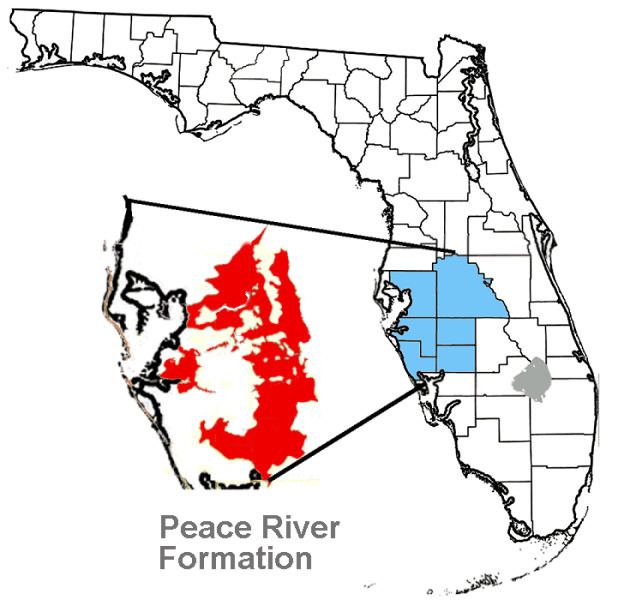Sub-units Bone Valley Member | Thickness 183 m Named for Peace River | |
 | ||
The Peace River Formation is a Late Oligocene to Early Miocene geologic formation in the west-central Florida peninsula.
Contents
Age
Period: Neogene
Epoch: Miocene to Pliocene
Faunal stage: Arikareean through Hemphillian ~23.03—4.9 mya, calculates to a period of 18.13 million years
Location
The Peace River Formation appears as an outcropping or is beneath a thin overburden from Hillsborough County to Charlotte County on the southern part of the Ocala Platform. extending into the Okeechobee Basin. It is widespread in Florida and part of the intermediate confining aquifer system.
Lithology
The formation is composed of sands, clays and carbonates which are interbedded. The sands are light gray to olive gray and poorly consolidated. They are clay-like with some dolostone with a very fine to medium grained phosphate component. Carbonates are usually light gray to yellowish dolostone found in outcroppings. The dolostones are soft to hard with variably sandy, clay-like, phosphate components with opaline chert often found. The phosphate content is high enough to warrant mining.
Three sequences of sediment deposition were defined in 1998. Five lithofacies were identified in 2000 (upper part of the formation).
Fossils
Members
The Bone Valley Member is a subunit of the Peace River Formation (originally the Bone Valley Formation) and occurs in a limited area on the southern part of the Ocala Platform in Hillsborough, Polk County, and Hardee County. (Webb & Crissinger). It is consistently clastic with sand-sized grains and larger grains of phosphate in a mixture of quartz sand, silt and clay. The consolidation is poor and colors range from white, light brown and yellowish gray to olive gray and blue green.
